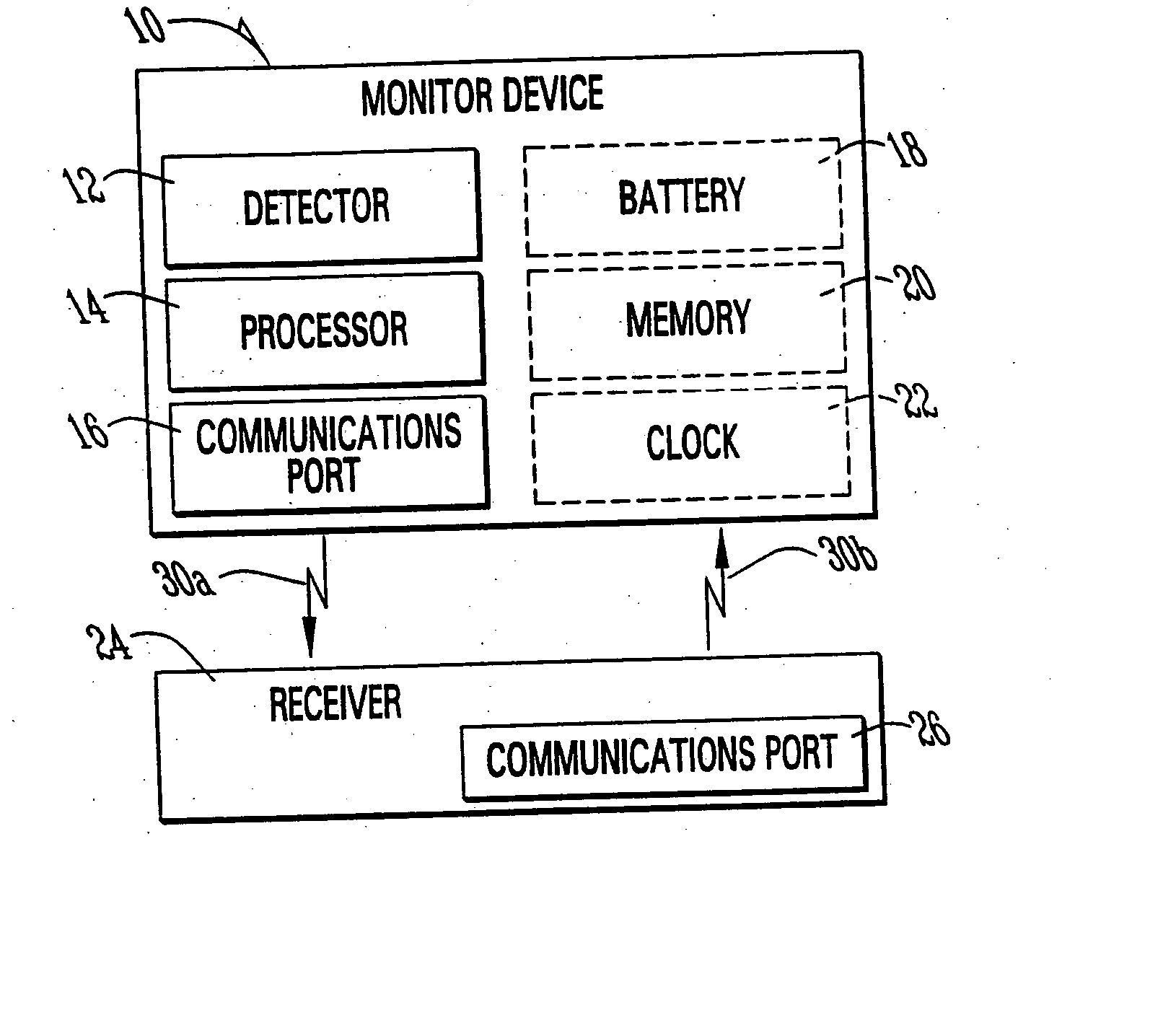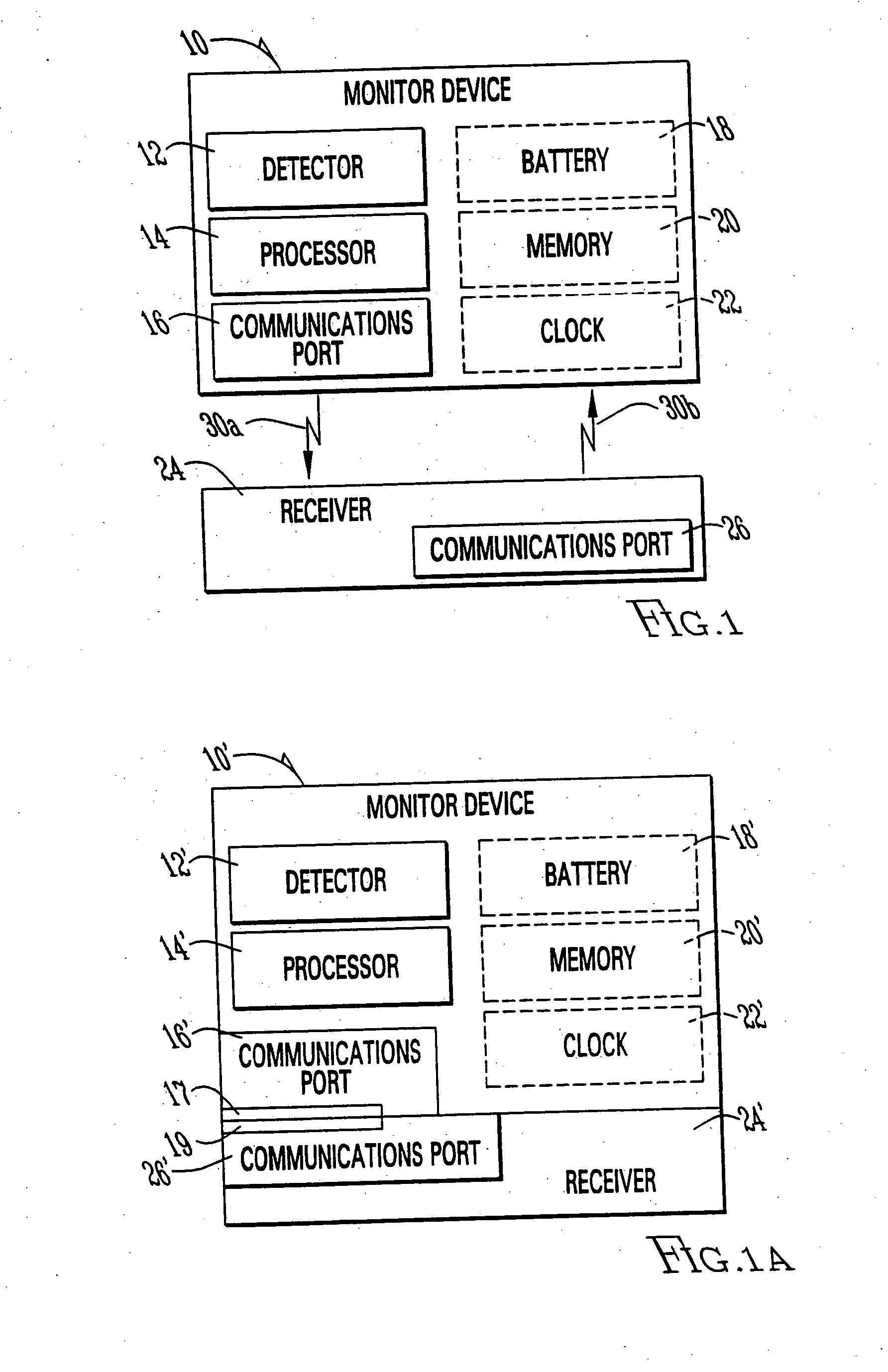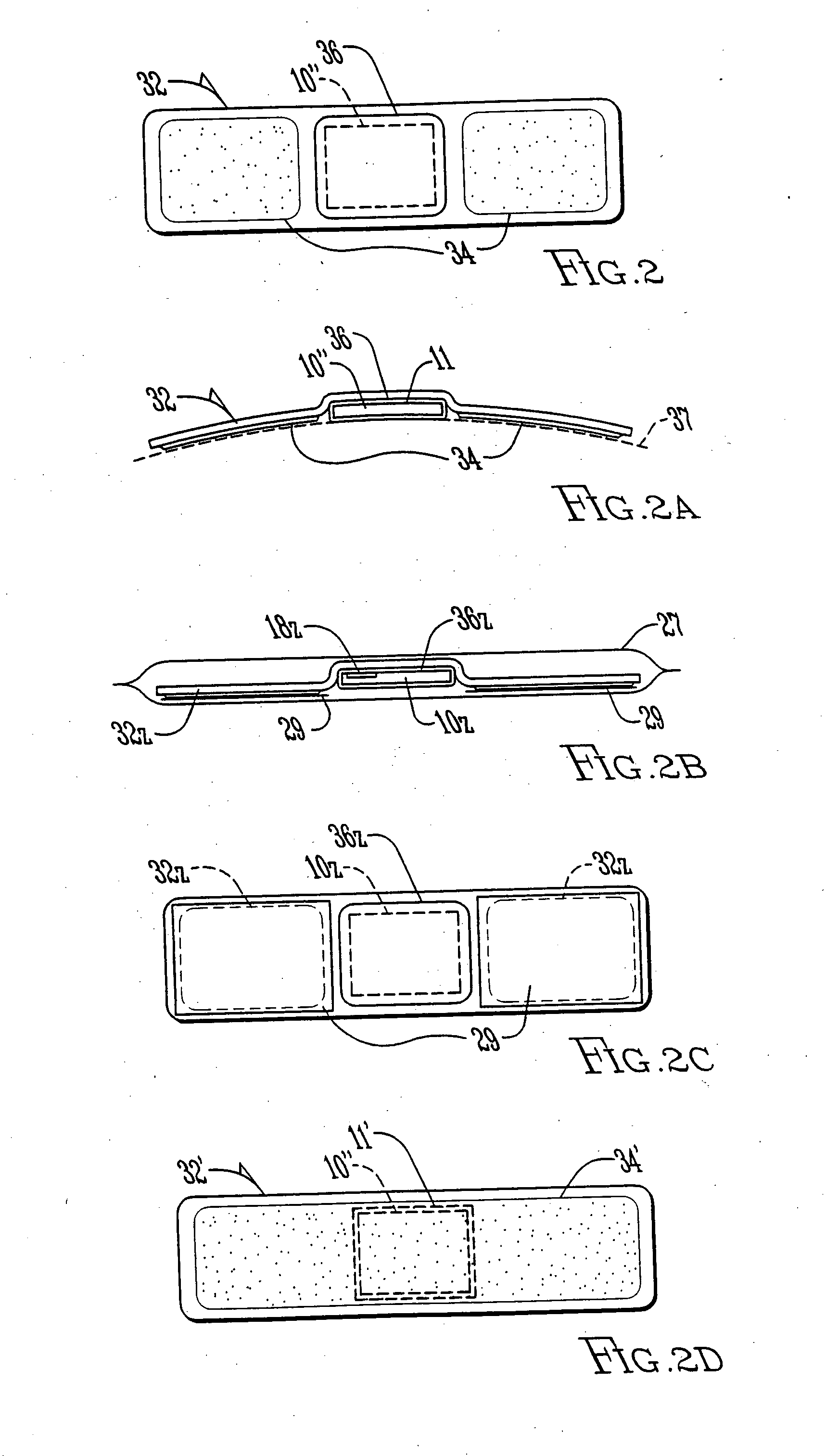Electronic drink coaster
a drink coaster and electronic technology, applied in the field of drink coasters, can solve the problems of not generally determinable in the prior, minute to minute, second to second, and body movement involved in transportation is subject to many forces, and does not provide for this knowledg
- Summary
- Abstract
- Description
- Claims
- Application Information
AI Technical Summary
Benefits of technology
Problems solved by technology
Method used
Image
Examples
Embodiment Construction
[0191]FIG. 1 shows a monitor device 10 constructed according to the invention. Device 10 can for example operate as a MMD or EMD described above. Device 10 includes a detector 12, processor 14, communications port 16, and battery 18. Preferably, device 10 also includes solid-state memory 20. Memory 20 can be integral with processor 14 (or other element of device 10, including port 16), or a stand-alone element within device 10. As a MMD, for example, detector 12 senses movement experienced by device 10 and generates signals indicative of that movement. Processor 12 then processes the signals to extract desired movement metrics, as described herein. Typically, when the movement metrics exceed a predetermined threshold, processor 12 stores data as an “event” within memory 20. Events are also preferably tagged with time information, typically date and time, as provided by clock 22.
[0192] As an EMD, for example, detector 12 senses temperature experienced by device 10 and generates sign...
PUM
 Login to View More
Login to View More Abstract
Description
Claims
Application Information
 Login to View More
Login to View More - R&D
- Intellectual Property
- Life Sciences
- Materials
- Tech Scout
- Unparalleled Data Quality
- Higher Quality Content
- 60% Fewer Hallucinations
Browse by: Latest US Patents, China's latest patents, Technical Efficacy Thesaurus, Application Domain, Technology Topic, Popular Technical Reports.
© 2025 PatSnap. All rights reserved.Legal|Privacy policy|Modern Slavery Act Transparency Statement|Sitemap|About US| Contact US: help@patsnap.com



